Retro Replay Review
Gameplay
“Homeless: it’s no game” immerses you in the daily grind of a street person, guiding your character across a simplified urban grid with nothing but a pair of holey shoes and sheer determination. Movement is handled via the arrow keys, letting you traverse intersections, alleyways, and open squares in search of sustenance, shelter, and dignity. Each key press carries weight: will you dart toward the dumpster behind the restaurant, or make a beeline for the church-run soup kitchen?
At the heart of the experience lies a tug-of-war between three vital meters: Esteem, Hunger, and Bladder. Hunger and Bladder act as antagonists—neglected too long, and they will erode your character’s self-worth, represented by the Esteem meter. You must scavenge bottles from recycling bins, pawn odd goods in the street market, or beg for change, all while keeping your bodily needs in check. Fail to prioritize public bathroom stops, and you’ll suffer a blow to your dignity that no amount of soup can fully restore.
Despite the bleak premise, a strategic undercurrent drives every decision. Should you risk a longer detour to a 24-hour café that charges ten cents per cup of coffee, or make do with the free, but overcrowded, church luncheon? The clock ticks on a 24-hour cycle, and if you manage to balance these competing needs—keeping yourself fed, rested, and dignified—your Esteem meter eventually tips you towards a chance at reintegration. It’s a stark reminder that small choices can accumulate into life-changing outcomes.
Graphics
The visual style of “Homeless: it’s no game” embraces a minimalist, pixel-art aesthetic. Buildings, dumpsters, and lampposts are rendered with just enough detail to be easily identifiable, while the gritty color palette—washed grays, muted browns, and the occasional neon sign—captures the drab atmosphere of city streets after dark. This understated approach helps convey the bleakness of life on the margins without resorting to hyperrealism.
Character sprites are deliberately small and hunched, their worn coats and tattered shoes evoking a sense of vulnerability. Animations are sparse but purposeful: a quick head tilt when your Bladder meter nears critical, or a slight hop of relief when you score a free meal. These subtle touches reinforce the emotional stakes behind each gameplay loop, turning simple visuals into effective storytelling tools.
The user interface is clean and functional. Meters for Esteem, Hunger, and Bladder rest unobtrusively at the top of the screen, color-coded and easy to monitor at a glance. Interactive hotspots—dumpsters, recycling bins, markets—glow faintly when you’re in range, ensuring you’re never left guessing where to click next. While the graphics won’t win awards for flashiness, they excel at clarity and atmosphere, keeping you focused on survival rather than flashy distractions.
Story
The narrative of “Homeless: it’s no game” unfolds over a single, pivotal 24-hour period. You start at dawn in a nameless neighborhood, hunkered down in a makeshift cardboard shelter. From the moment you step out into the street, every crumb of bread, every coin found beneath a park bench, becomes part of your story. There’s no cutscene exposition—your tale is written through actions, successes, and failures.
In a narrative twist unique to the medium, the game allows for a glimmer of hope. If you can effectively manage your needs—scavenging for bottles to return at liquor stores, scavenging goods to pawn at street markets, and making calculated stops for food and restroom breaks—your Esteem meter climbs. That meter’s upward arc symbolizes more than self-worth; it suggests the possibility of rebuilding a life beyond the sidewalk, stepping into shelters, finding a case worker, and pursuing job training.
Though the ending is never explicitly shown—“that’s a whole other game,” as cheekily linked in the in-game dialogue—it hangs on the promise of transformation. Your success doesn’t just clear statistics; it hints at a longer journey of rehabilitation and renewal. The story’s strength lies in its restraint: it doesn’t sugarcoat hardship, nor does it offer a fairy-tale escape. Instead, it invites players to experience, however briefly, what it might take to climb out of rock bottom.
Overall Experience
“Homeless: it’s no game” is a bold, uncompromising simulation that challenges players to confront the fragility of basic human needs. Its simple mechanics belie a deeper commentary on social systems, empathy, and resilience. You’ll find yourself strategizing every cent, every step, and every pit stop, all while silently rooting for your pixelated alter ego to earn that elusive second chance.
The title’s strength lies in its balance of accessibility and depth. Controls are immediate and intuitive, yet the three-meter management system adds a layer of strategic tension more often found in complex survival simulators. While the art style and sound design maintain a low-key presence, they work in harmony with the gameplay to underscore the game’s themes without overwhelming them.
For players seeking a reflective experience that blends resource management with social commentary, “Homeless: it’s no game” delivers. It may not be everyone’s cup of coffee—this is not a high-octane action title—but those willing to engage with its tough subject matter will find a thoughtful, memorable journey. By the time the 24-hour clock winds down, you’ll have a profound appreciation for both the mechanics on-screen and the real-world struggles they mirror.
 Retro Replay Retro Replay gaming reviews, news, emulation, geek stuff and more!
Retro Replay Retro Replay gaming reviews, news, emulation, geek stuff and more!
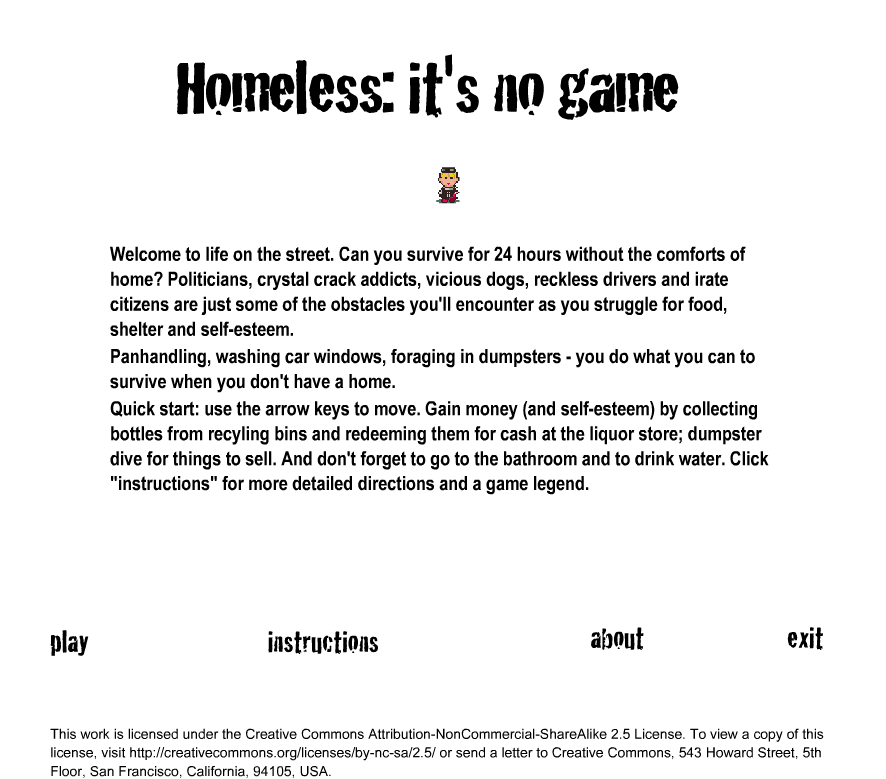
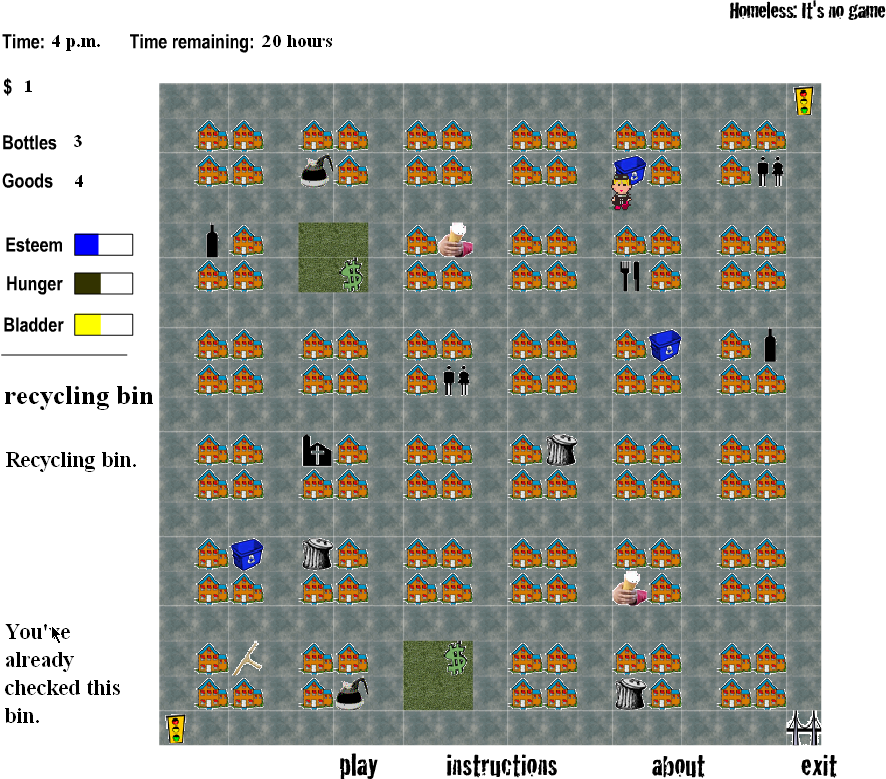
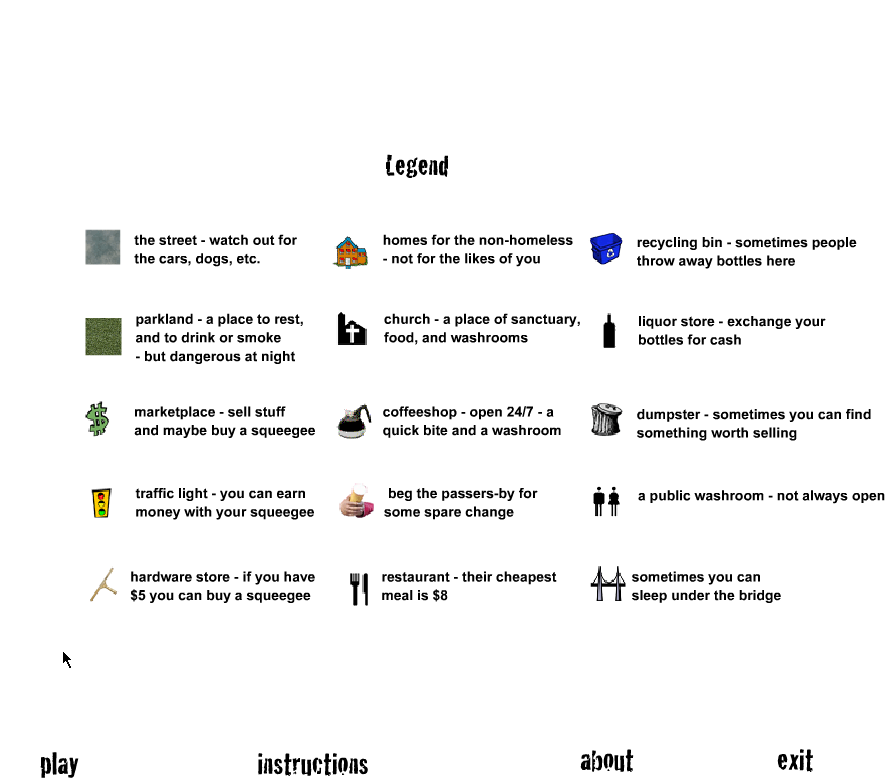
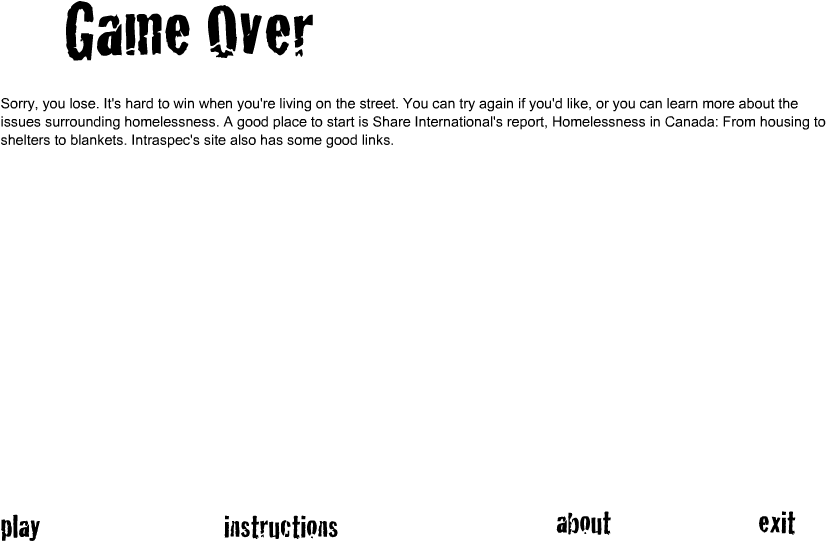
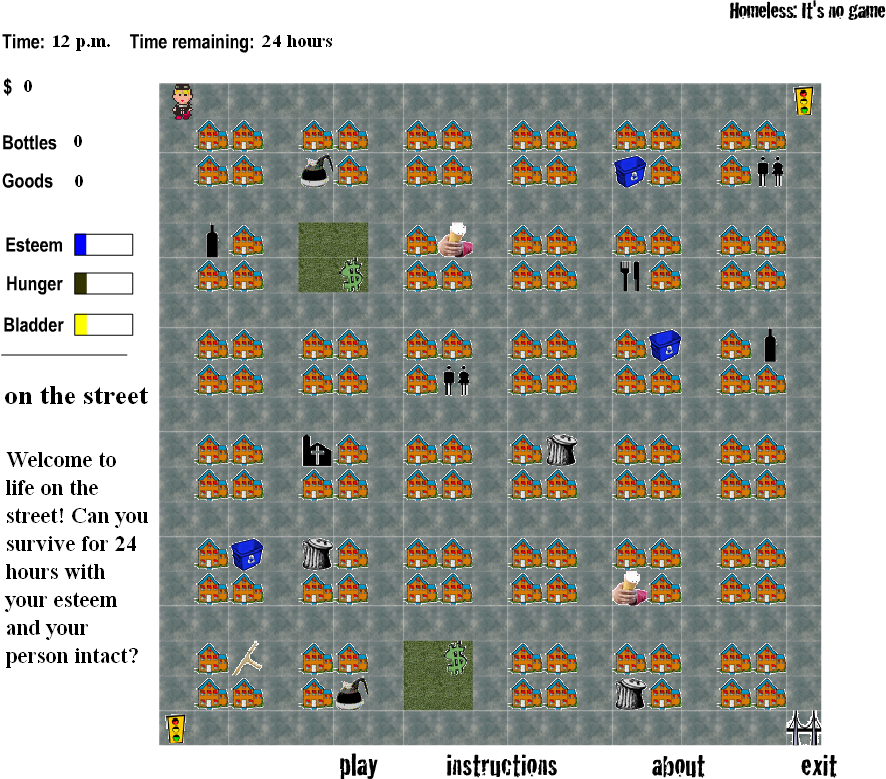
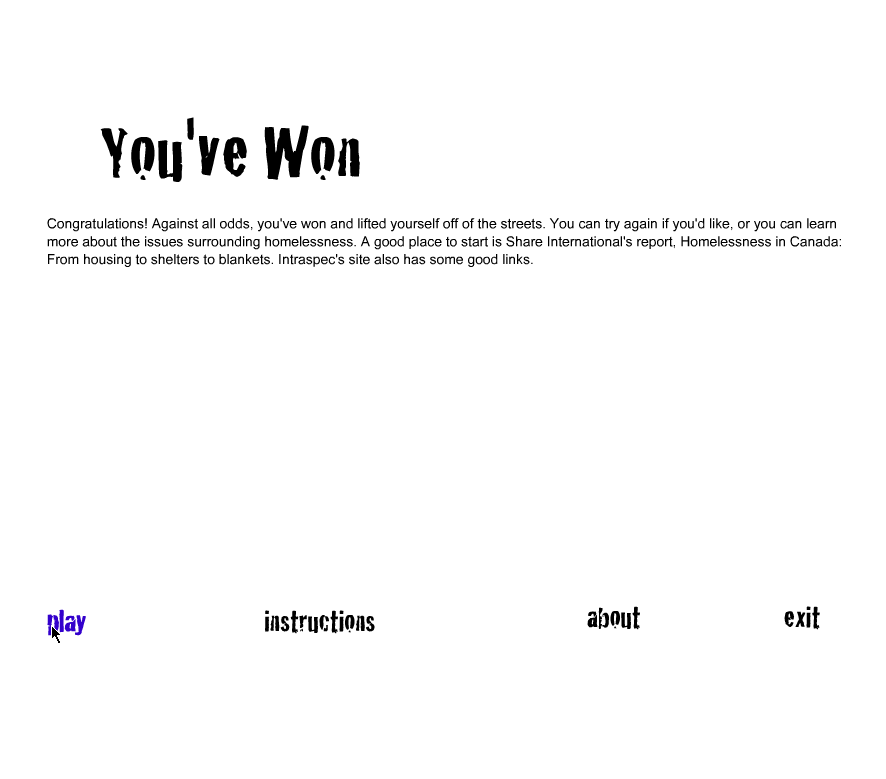



Reviews
There are no reviews yet.